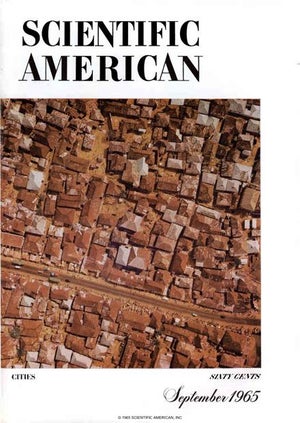The Urbanization of the Human Population
An issue on cities: how they arose, how they are evolving in various circumstances, how they shape themselves. More than half the world's people will probably be living in cities of 100,000 or more by 1990

You are currently logged out. Please sign in to download the issue PDF.
An issue on cities: how they arose, how they are evolving in various circumstances, how they shape themselves. More than half the world's people will probably be living in cities of 100,000 or more by 1990
The first cities arose some 5,500 years ago; large-scale urbanization began only about 100 years ago. The intervening steps In the evolution of cities were nonetheless a prerequisite for modern urban societies
The urban revolution that began In the latter half of the 19th century has culminated In a qualitatively new kind of human settlement: an extended urban area with a dense central city
The first of four articles on cities that exemplify diverse urban situations. Calcutta has become a metropolis without benefit of the industrial revolution that gave rise to cities in advanced nations
The concept of planning the development of a city came late to most cities. Stockholm is an exception: its growth has been planned since the establishment of a city p1anning office more than 300 years ago
Venezuela is building a metropolis as a key part of a plan to advance its national economy. The effort is complicated by the fact that the impoverished residents of the countryside are imploding to the site
Within the region of which New York is the central city are 550 separate municipal governments. How can the sometimes mutual and sometimes conflicting interests of these communities be unified?
In cities all over the world land is used for specialized purposes such as housing and industry. One of the main problems of any city is how to control these uses to enable the city to function and evolve
Urban transportation has to do not only with moving people and goods into, out of and through the city but also with the spatial organization of all human activities within it
In the U.S. today attention is focused on shortages of water and the pollution of water and air. There is plenty of water, but supplying it requires foresight. Pollution calls for public economic decisions
Many U.S. cities, with the aid of the Federal Government, are engaged in ambitious efforts to renew themselves. It is not certain, however, that the overall gains of these programs have outweighed the losses
If the world were covered with a single vast city, how would one achieve the felicitous contrasts of city and country? The metaphor dramatizes the need for making the texture of great cities richer